The 2015 Razer Blade Review
by Brett Howse on February 11, 2015 2:00 PM EST- Posted in
- Laptops
- Razer
- Razer Blade
- Notebooks
- GTX970M
Display
The 2013 Razer Blade had a 1600x900 TN panel, and for 2014 Razer replaced it with a Sharp IGZO 3200x1800 LCD. At 262 pixels per inch, it was one of the higher DPI panels on any laptop last year. While High DPI in the Windows world is not perfect, it has gotten a lot better over the last year. In my experience, the benefits of High DPI outweigh the drawbacks. Major vendors like Adobe have released High DPI aware versions of their software suites, and even Google Chrome has made good progress with High DPI support in Windows this year. The situation is still not perfect, but we are getting better. Steam used to have issues, but they have all been resolved, however Origin does not scale at all. Still, the display in the 2014 Razer Blade was one of its stand out features.
For 2015, Razer has kept the exact same display, which is not a bad thing at all. The 2014 Razer Blade had one of the more accurate displays out of the box, with decent brightness and great contrast. As this is a Sharp IGZO (Indium Gallium Zinc Oxide) thin film transistor (TFT) based LCD, the thinner TFT allows more light to pass through, and keeps the power requirements of the backlight down. Some panels go with a Red Green Blue White pixel arrangement, with the white pixel just there to increase brightness. Sharp’s IGZO panels keep with the standard RGB stripe, allowing the possibility for a more accurate panel.
Razer includes a default color profile for the display as well. Blade.icm pulls the calibration in a lot closer than the standard panel would be. Just because it is IGZO (possibly AHVA but certainly not TN) does not mean it is going to be accurate, so it is good to see the default color profile included as most people do not have any equipment to calibrate the monitor themselves. All of our uncalibrated tests were run with the Blade.icm as the default profile for Windows.
To calibrate our displays, we use SpectralCal’s CalMAN 5 software suite with a custom workflow. An X-Rite i1Display Pro colorimeter is used for brightness and contrast measurements, and an X-Rite i1Pro Spectrophotometer is used for color accuracy tests. We calibrate all displays to the sRGB standard, and to 200 nits brightness.
Uncalibrated with default Blade.icm profile
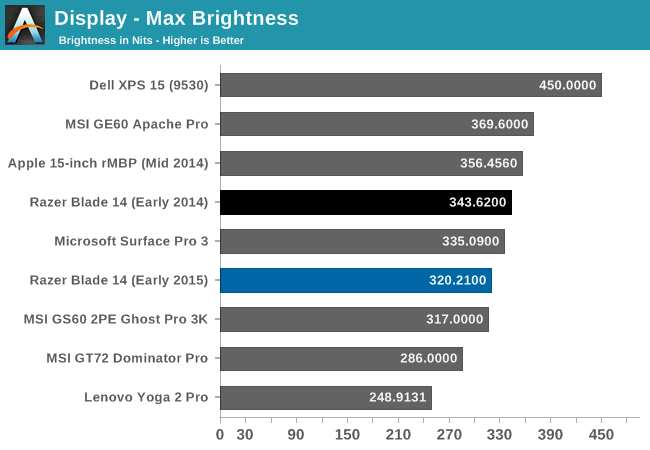
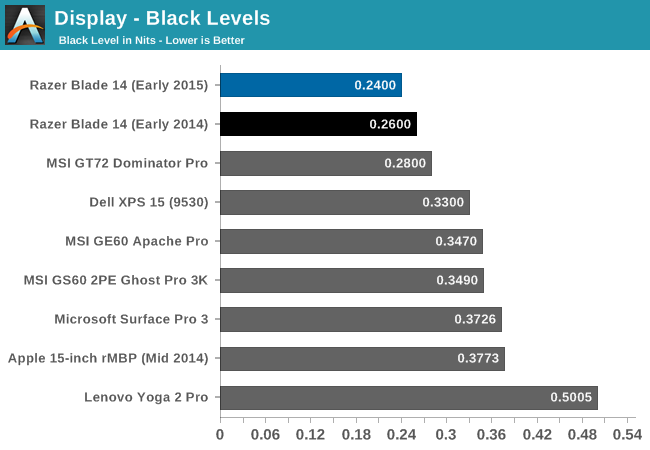
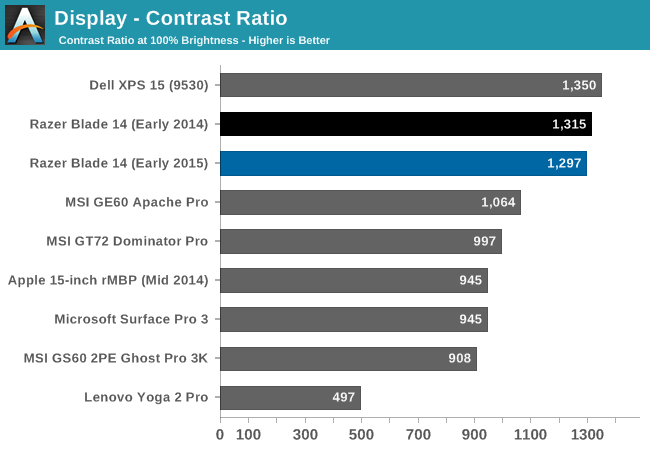
Razer rates the Blade at 350 nits, and it fell a bit short of that mark. This year’s model that was received could achieve 320 nits. Contrast ratio was still very good though with excellent black levels.
Here we can start to see that our 2015 sample was not as dialed in, with a blue shift happening at the higher end of the grayscale sweep, pulling the grayscale up to 5.1. White point is a bit blue as well at 7121.
Saturations are also a bit higher in this year’s model, with a jump to just over three. Three is still a good value though.
GMB drops compared to the 2014 model, but still comes in at a very respectable 2.58. We would like values under three if possible, and the review unit delivers.
So out of the box, with the Razer color profile, the review unit in hand today does not quite live up to the lofty results from the 2014 model. It still comes in with a good solid result, but does not top the charts for this year.
However, we can also calibrate it to see if we can improve it. Since the main issue was the grayscale being off, this is something that can be corrected through calibration.
Calibrated – 200 nits
Now we can see that the 2015 panel is just as good as the 2014 panel (which is not a huge surprise since it is the same specification) and the grayscale falls to just 0.7, and the improvements in gamut, saturation, and GMB with the new icc file bring those values in around 1.0 to 1.5. Just like last year, the blue value still overshoots, but the result is a fantastic.
One thing that we do not normally mention in our laptop reviews is minimum brightness, because normally, it is very low. As an example, the Yoga 2 Pro goes all the way down to under 3 nits. That is a bit excessive, but the HP Stream minimum brightness is 16 nits, and the Dell Latitude E5250 was 15 nits. Somewhere around 15-20 nits is good, and lets you use the laptop in a dark room very easily.
The Razer Blade has a minimum brightness of 90 nits. This is far too high for a minimum brightness, and makes it a chore to use in a dark room. Hopefully Razer can release a BIOS upgrade with new settings and allow this to go lower.




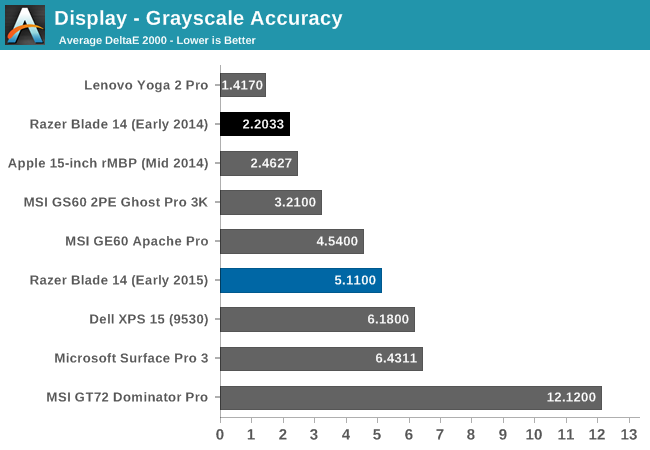

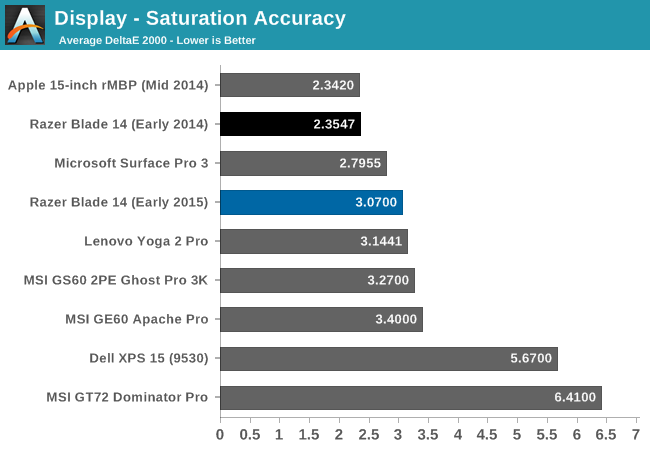

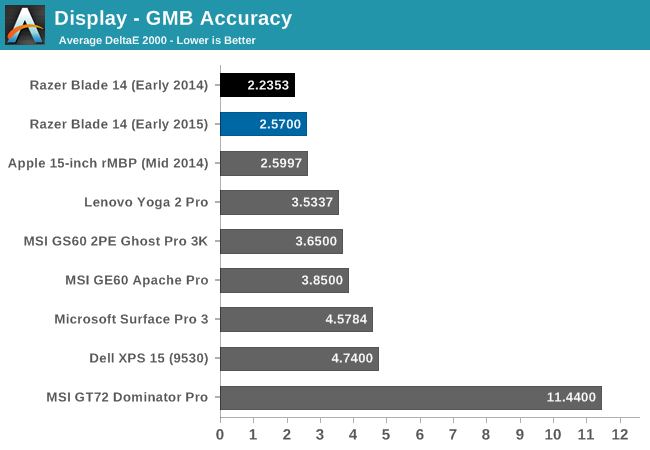

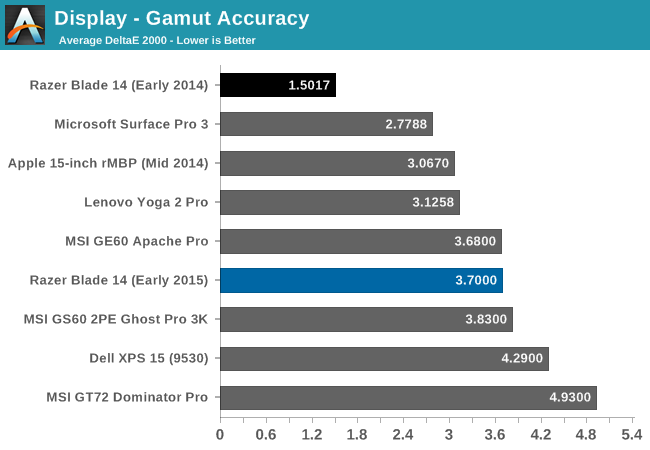
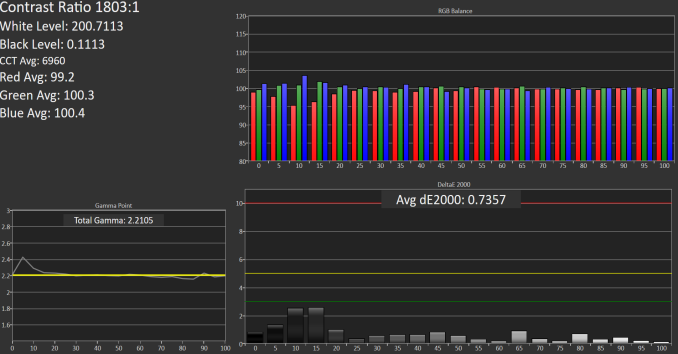
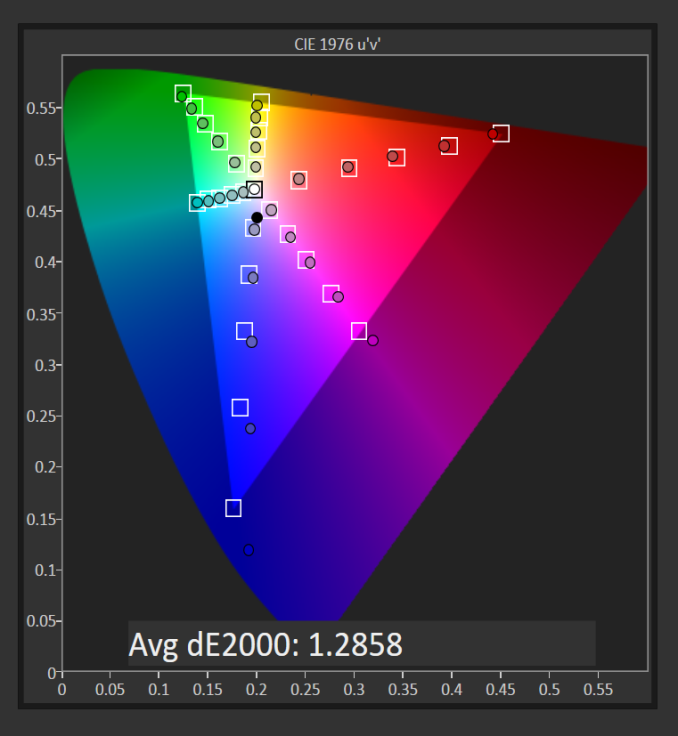
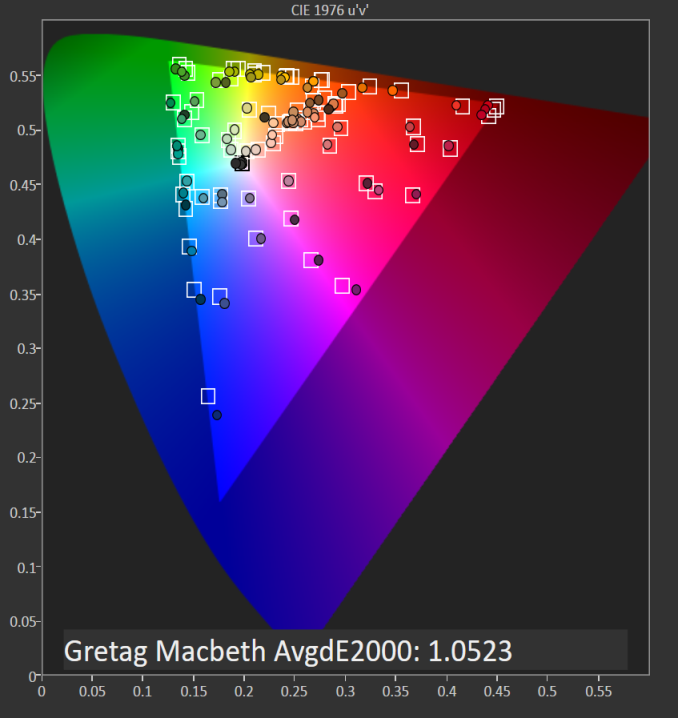









116 Comments
View All Comments
peterfares - Thursday, February 12, 2015 - link
There are lots of issues with HDMI 1.4 and 2560x1440. Most don't seem to be able to do 2560x1440 at 60Hz.http://www.notebookcheck.net/2560x1440-or-2560x160...
Most of these tests were able to get 55Hz after setting a custom resolution. I tried once to get 2560x1440 60Hz out of a laptop with only HDMI and I couldn't do it whereas my laptops with DisplayPort I can just plug in and it works.
close - Thursday, February 12, 2015 - link
It doesn't mimic anything. It's just a good design. It's like saying that all cars mimic the Ford Model T or something. It is a shame indeed that it lack some connectivity but if they actually did study the market and most of their potential customers wanted this it sounds reasonable enough.Jaisah - Thursday, September 3, 2015 - link
The body is almost identical to the rMBP and even the inside (fan positioning, soldered ram and location, speaker position, battery position) looks very similar to the rMPB. Maybe they didn't copy the rMBP but they certainly used it for inspiration :PUplink10 - Wednesday, February 11, 2015 - link
Why do people buy laptops with pricey gimped i7 CPUs, which cost the same as ungimped CPUs. They should make laptop with i5 desktop CPU which is much cheaper but it is not gimped and has the same performance.dragonsqrrl - Wednesday, February 11, 2015 - link
... and a far higher TDP.Oh and the answer to your question: TDP (probably package size as well)
anactoraaron - Wednesday, February 11, 2015 - link
What? Did you just start reading AT? They analyzed this not too long ago. http://www.anandtech.com/show/7287/analyzing-the-p... The higher end quad w/ht i7 laptop chips hold their own against any desktop i5... and at a much lower tdp. I'm not sure how you define gimpedUplink10 - Wednesday, February 11, 2015 - link
They could have higher clocks but also a little higher TDP.DanNeely - Thursday, February 12, 2015 - link
Because at about the same TDP the mobile i7 is faster than the desktop i5. The 47W i7-4720m has a base of 2.6ghz and can turbo to 3.4-3.6. The 45W i5-4690T only has a base of 2.5GHz and tops out at 3.1-3.5 for turbo. The overall TDP between the two chips is closer because the desktop chipset is 4.1W vs 2.7 for the mobile one. To get faster than a baseline mobile i7 you need to go to the 65W S series i5s. Normal laptops don't do that because an extra 20W of TDP will give much better returns most of the time with a faster GPU. You'll occasionally see a desktop CPU it in an 18-19" luggable; but other than in form factor those machines don't really qualify as laptops because they're too big, too heavy, and have too little battery life even at idle to be usable away from a desk.And even at that, in turbo mode the top end end mobile 47W i7-4980HQ is faster than the 88w desktop i5.
Uplink10 - Thursday, February 12, 2015 - link
I thought you generally have laptop plugged in when playing games. And when you do not play games for few hours, you can use a CPU with little higher TDP.Brett Howse - Thursday, February 12, 2015 - link
It's not about battery life. You have to get the heat out. On a desktop PC, the headsink and fan combo is 3-4 times thicker than the entire laptop. Next, look at the cooling solution on a GTX 970 desktop part and then look at the laptop.